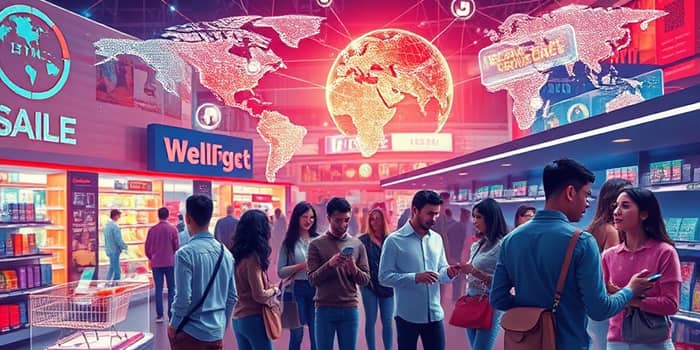
The digital revolution has propelled online retail to unprecedented heights, transforming the way consumers shop and businesses operate. As we stand at the cusp of a new era, the e-commerce landscape continues evolving at breakneck speed, driven by innovation, consumer demand, and a rapidly expanding global market.
This article delves into the core trends reshaping retail, offering insights and practical guidance for entrepreneurs, corporate leaders, and consumers navigating the digital marketplace.
Global e-commerce sales are forecast to reach between $6.42 trillion and $8.3 trillion by 2025, reflecting an astonishing 55.3% increase since 2021 and a further 6.86% rise from 2024. This unprecedented global market expansion underscores the shift toward online commerce as a fundamental economic pillar.
With approximately 28 million active e-commerce businesses operating worldwide—a 27% surge from pre-pandemic levels—the industry’s growth trajectory shows no sign of slowing. Yet, despite its massive scale, 70% of these businesses generate less than $1 million annually, indicating vast potential for upward mobility through innovation and strategic investment.
China, the United States, and Western Europe collectively account for 80% of global e-commerce revenue, with China alone contributing 52%, the U.S. 16%, and Western Europe 12%. However, emerging markets such as Brazil, India, and Southeast Asia are fast closing the gap, fueled by expanding internet access and rising consumer purchasing power.
Understanding regional nuances is critical for businesses seeking cross-border expansion:
Innovation sits at the heart of e-commerce’s explosive growth. From artificial intelligence and automation to immersive reality, retailers are harnessing cutting-edge solutions to deliver hyper-personalized customer browsing experiences and streamline operations.
These advancements not only enhance customer satisfaction but also foster operational resilience, allowing retailers to adapt swiftly to market fluctuations and global disruptions.
Modern consumers expect convenience, speed, and personalization at every touchpoint. Over 70% of online purchases now occur via mobile devices, while digital wallets account for more than half of all transactions in many regions.
Omnichannel shopping has become the norm: customers research products online, visit physical stores for tactile experiences, and complete purchases via mobile apps. Retailers that excel deliver seamless omnichannel shopping experiences, integrating inventory, marketing, and customer service across channels.
To harness the full potential of e-commerce, retailers must overcome legacy system challenges and organizational silos. Digital transformation requires a holistic approach, encompassing technology, processes, and culture.
Key strategies include:
By prioritizing end-to-end integration—from supply chain digitalization to customer engagement—businesses can unlock new revenue streams and sustain long-term growth.
While B2C e-commerce captures headlines, the B2B segment is experiencing its own explosion. Valued at $19.34 trillion in 2024, the global B2B e-commerce market is projected to more than double to $47.54 trillion by 2030.
In the United States, retail e-commerce sales alone are expected to exceed $2.5 trillion by 2030, reflecting robust consumer demand and continual technological advancements.
These figures highlight the vast opportunities for businesses to innovate supply chains, offer digital storefronts for enterprises, and build partnerships that drive collective growth.
Sustainability is no longer optional; it is a competitive differentiator. Brands that implement eco-friendly practices, ethical sourcing, and digital traceability foster deeper trust with eco-conscious consumers and governments.
Other emerging trends include:
As e-commerce evolves, businesses that embrace sustainability, leverage emerging technologies, and remain customer-centric will thrive in an increasingly competitive marketplace.
In conclusion, the e-commerce explosion represents more than a temporary surge—it marks a seismic shift in the global economy. By understanding regional dynamics, investing in innovation, and aligning with consumer expectations, retailers can chart a path toward sustainable success in this digital age.
References













